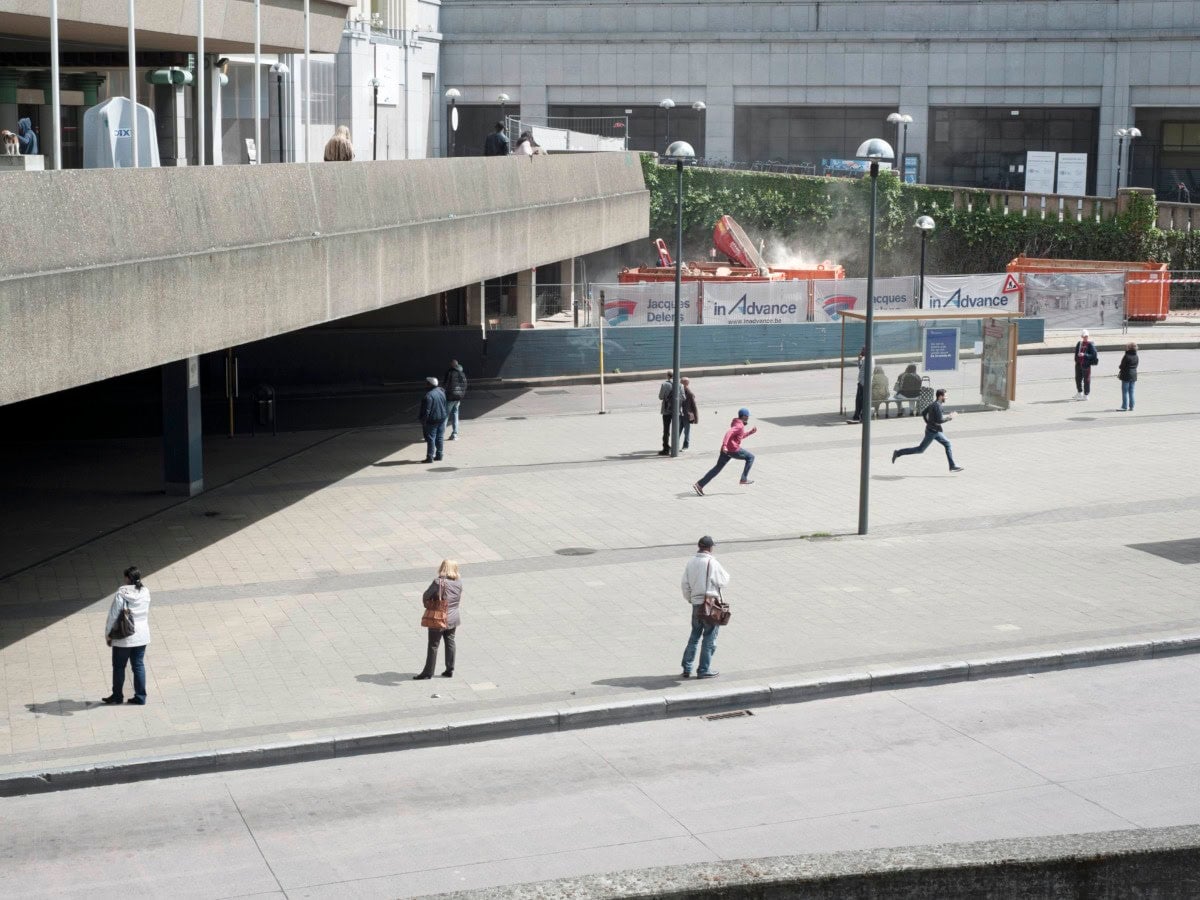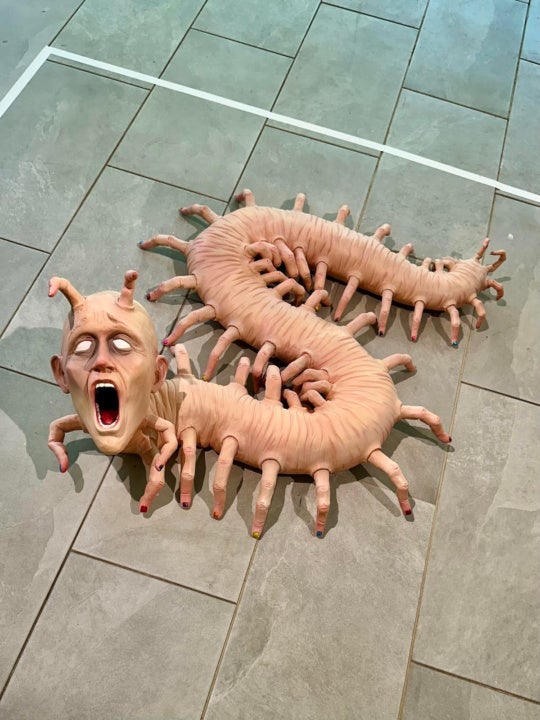
Over the last two decades, photography has seen drastic changes in its consumption, manipulation, and open-source accessibility. The practice itself has become so universally co-opted, it poses the question: what is modern photography as a fine art practice in 2021 and who are the people claiming its namesake?
In a group exhibition entitled New Photography: Create, Collect, Compile at the New Orleans Museum of Art, four photographers interrogate contemporary exhibitions of photographic artistry while exploring their own histories, identities, and ideas about power. Elliott Jerome Brown Jr., Esther Hovers, Dionne Lee, and Guanyu Xu all consider new concerns emerging over privacy and control in the field of photography. What was formerly a private encounter, haptic and two dimensional, is now an over-publicized viewing experience, digitized and immaterial.

Esther Hovers’s work fascinates by implementing an aesthetic omnipresent in surveillance footage. At first glance, her work appears to be more documentary than artistic but makes demands of the viewer to examine longer because a complication of movement is at play. In her False Positives series, Hovers has devised a body of work that undermines and mimics the authority of the security camera. Each photograph depicts a scene in which nothing actually threatening is happening but would likely be flagged as such by psychologically based research on criminal behaviors and movement patterns. The images put the viewer in the position of the security camera, creating a sense that one is breaching the privacy of fellow civilians. False Positives is a fantastic examination of the visual biases in data-driven algorithms and a quiet spotlight on the subverted assumptions and the worst expectations we presume of our compatriots.
Dionne Lee is also examining the innocuous in her found-image, landscape photography. Alongside elements of collage, drawing, and performance, Lee employs traditional dark-room techniques to conjure the quiet tensions everyday objects hold within the contexts of histories that Black people have been traditionally left out of or exploited by. In her single-channel video stream A use for rope or string, two sets of hands dance between each other making ever-changing webs from a single loop of string. Seeing the playful exchange initially evokes a pang of nostalgia for childhood antics in the viewer. Though as the video continues within the context of Lee’s surrounding images, the gamesome use of rope is interpreted as the irrefutable tenacity of Black joy and its ability to prevail in the face of a cruel history once predisposed towards the violent use of rope in the bondage, lynching, and torment of Black peoples.

In the works of Elliott Jerome Brown Jr. and Guanyu Xu, queerness is articulated with a spatial awareness aimed at invoking new considerations on how we visualize queer bodies taking up space. Brown’s interest in the architecture of a photograph depicts the paradox of inclusion versus exclusion while maintaining the authority of privacy of the subjects in their photographs. Brown’s She has yet to make it right is a single floor-to-ceiling photograph cut in two, resting at an angle. The diptych exposes an LED-lit interior behind the photographed panels. This piece stands out not only for the generous amount of space it claims but because it appears unabashed in execution. The title card suggests that there is another image illuminated, obscured behind the photograph: She has yet to make it right where a wine glass covers the subject’s face. What this particular piece might suggest to a museum-goer is that there are permissions not entirely granted—that ultimately it is up to the subject whether or not they will be seen. Brown’s work does not mimic long-avowed, traditional portraiture. This is a refreshing contrast to how queer bodies have been photographed in the past––often lewd, insulting, or plainly inaccurate, and for the entertainment of a heteronormative gaze.
In Guanyu Xu’s Temporarily Censored Home there is a surreptitious nature not only throughout his photographs but in how Xu creates them. His photos incorporate torn images and printed posters folded into a suitcase flown halfway around the globe. A clandestine routine ensues as the collected imagery gets hastily unfolded, re-hung, and distributed in his Beijing familial home. This clandestine routine happens without his family’s knowledge. The collaged installations Xu then captures begin to unpack a contemptuous relationship between himself and his familys’ understanding of who he is. Like many queer folks, the breadth of our full identities are often kept from the people who knew us before we were fully realized. Privacy to queer people is a deliberate excursion continually sought after for fear of unacceptance. Even in the most modern and progressive of times, it is a continually complex scaffolding and Xu’s photo-installations attempt to encapsulate that.
It is impossible not to detect, through Brown’s and Xu’s work, the potent triumph teeming within the context of long-standing, blatant omission of Black, Asian, and queer stories upheld by nationally accredited institutions and museums alike. Are we finally seeing a shift in national attention towards communities that better reflect the nation at large? I fucking hope so.




